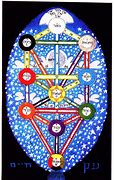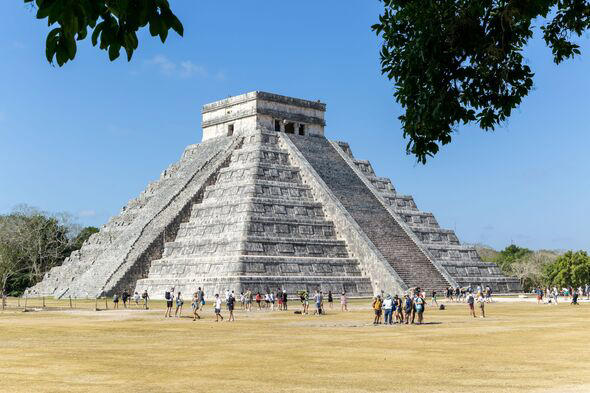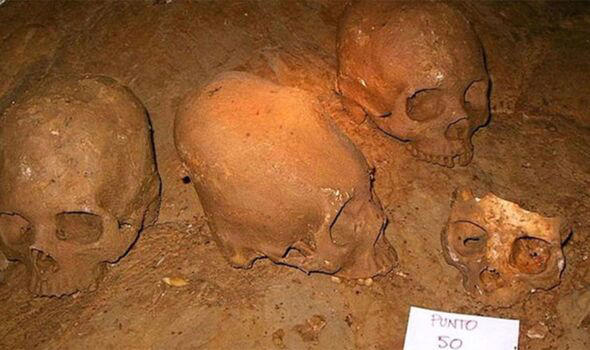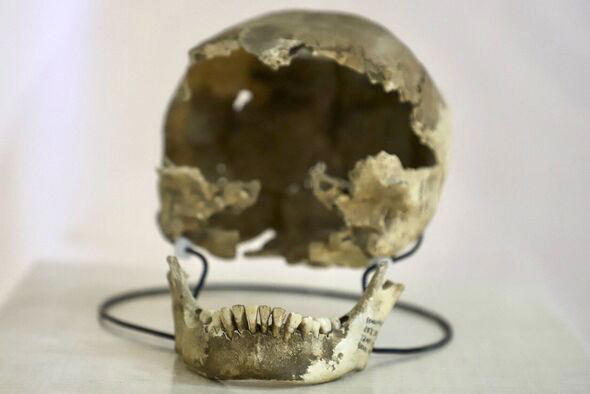ARCHAEOLOGISTS CRACK MYSTERY OF ANCIENT MAYA AFTER 7,000-YEAR-OLD REMAINS FOUND













Archaeologists crack mystery of ancient Maya after 7,000-year-old remains found
The Maya have fascinated historians for centuries, a civilisation that lived as far back as 1800 BC.
Although they were encountered by the Spanish Conquistadors in the 1500s, American traveller and archaeologist John Lloyd Stephens is largely credited as the first Westerner who stumbled across their famous ruinous cities, discovering them during a journey between 1839 and 1842.
Today, descendants of the Maya still live in their former homelands across Central America but number nowhere as many as they once did during the peak of their empire - a figure that has been placed as 20 million strong.
Many of the sites at which they once lived have since been dug up and excavated all across the region, with a number of relics key to understanding their culture found.
One such find previously took place in the Tacotalpa municipality of Tabasco state in southern Mexico, where archaeologists stumbled upon a treasure trove of human remains thousands of years old.
Found inside the Puyil cave, researchers say the age of the bones places them in a period when humans shifted from being hunters to living a more sedentary lifestyle.
At least one of the remains was recorded as being 7,000 years old, while the others date back at least 4,000 years.
Archaeologist Alberto Martos, part of the team that excavated the site in 2018, said: "Seven thousand years old is what we've just placed it, which is the period of transition from being hunters to sedentarism.
"There were different groups during this time that used the caves, clearly it wasn't a domestic cave.
"In prehistoric times it was probably used for rituals and cemeteries, so as to dispose of remains of people.
"For the Maya, it was a cave of ancestors. This cave was used by the Maya, they respected the remains that were already there and left their own remains inside."
In essence, the remains enabled scientists to study and better understand what was happening at the time that the Maya civilisation traded hunting for a life of stability in cities and static dwellings.
There is more, however. The discovery of such skeletal remains also offers scientists vital information about things like dietary habits, which in turn provide snapshots about their way of life.
A few years after the discovery at Puyil cave, archaeologists analysed a set of teeth which once belonged to a high-ranking Maya chief called Ajpach' Waal.
Buried in Mexico some 1,300 years ago, Ajpach' Waal was born and raised in an elite family and enjoyed the finer things in life: good food, drink and easy access to luxury items of the time.
He grew up to become an ambassador in his community and negotiated an alliance between two major Mayan dynasties in 726 AD.
Yet, through his bones, researchers were able to piece together an altogether more bleak image of Ajpach' Waal's upbringing, both sides of his skull extremely spongy and porous indicating malnutrition in youth.
His right tibia, or shinbone, was at some point in his life fractured, likely the result of an injury during a contact sport.
Many of his teeth had been lost through gum disease, and a painful abscess was prominent in his mouth - not to mention the arthritis that was detected in the wearing and bending of his bones.
Writing in the journal, Latin American Antiquity, Kenichiro Tsukamoto, an assistant professor of anthropology at UC Riverside and lead author of the study, said: "The ruler of a subordinate dynasty decapitated Copán's king 10 years after his alliance with Calakmul, which was also defeated by a rival dynasty around the same time.
"We see the political and economic instability that followed both these events in the sparse burial and in one of the inlaid teeth."
Mr Tsukamoto added: "His life is not like we expected based on the hieroglyphics.
"Many people say that the elite enjoyed their lives, but the story is usually more complex.
Articles - Latest
- SOAP LEGEND DIES AFTER SUFFERING THREE STROKES AS FANS PAY TRIBUTE TO 'ELEGANT LADY'
- JOHN MAYALL, TOWERING FIGURE OF THE BLUES WHO BLOODED ERIC CLAPTON, PETER GREEN AND MICK TAYLOR – OBITUARY
- AT LEAST 22 CHILDREN KILLED AFTER SCHOOL BUILDING COLLAPSES DURING CLASS
- REVOLUTIONARY SEX THERAPIST DR RUTH DEAD AT 96
- SHELLEY DUVALL DIES AGED 75
- DEATH POOL' DISCOVERED AT THE BOTTOM OF THE SEA THAT KILLS EVERYTHING 'IMMEDIATELY'
- DAVID WEBB OBITUARY
- EDGAR LANSBURY DIES AT 94
- GYLES BRANDRETH DIDN’T KILL ROD HULL – I DID, CLAIMS EX-COUNTESS
- ANOTHER FRENCH LANDMARK UP IN FLAMES EXACTLY A MONTH AFTER THE LAST
- PAT COLBERT, ACTRESS WHO PLAYED DORA MAE ON “DALLAS”, DIES AT 77
- CHIEF ROYAL BAKER WHO MADE CHARLES AND DIANA’S WEDDING CAKE BURIED WITH PIPING BAG IN HAND
- MIKE HESLIN DEATH: LIONESS ACTOR DIES ‘UNEXPECTEDLY’ AGED 30
- WEALTHY REAL ESTATE MOGUL DEAD AT 43
- RUGBY LEGEND ROB BURROW DIES AT 41 AFTER FIVE-YEAR BATTLE WITH MND
- SOAP STAR AND GROUNDBREAKING MODEL DIES AGED 80
- SOUL LEGEND AND THE VAGABONDS FRONTMAN JIMMY JAMES DIES AGED 84
- HUMAN ELBOWS EVOLVED TO ACT AS BRAKES – SAVING OUR ANCESTORS FROM A GRIM DEATH
- ROCK 'N' ROLL PIONEER DUANE EDDY DIES AGED 86
- EXPLORING THE VEIL: THE PROFOUND VISIONS OF THE DYING, UNVEILED BY DR. KERR
- REMEMBERING CHAN ROMERO: 'HIPPY HIPPY SHAKE' SINGER DEAD AT 82
- MARY GREENACRE OBITUARY
- FORMER UFC HEAVYWEIGHT CHAMPION FRANCIS NGANNOU ANNOUNCES DEATH OF HIS 15-MONTH-OLD SON
Articles - Most Read
- Main
- Contact Us
- The science behind Ouija boards
- Cosmic Consciousness - What is Cosmic Consciousness-2
- Cosmic Consciousness-Introduction
- Cosmic Consciousness - Introduction-2
- MASSIVE 6.1 MAGNITUDE EARTHQUAKE HITS NEW ZEALAND AS NATION STILL REELING FROM CYCLONE
- ARCHAEOLOGISTS UNRAVEL THE TRUTH OF APHRODITE, GODDESS OF LOVE, ON VALENTINE'S DAY
- The Human Condition-Thomas Keating
- Cosmic Consciousness First Words - 1V - 2
- Cosmic Consciousness First Words - V -
- Cosmic Consciousness V - 2
- Cosmic consciousness - First Words - IV
- Cosmic Consciousness - What is Cosmic Consciousness?
- Evolution and Devolution-Chapter 2
- The Human Condition - Thomas keating-3
- The Human Condition-2-Thomas Keating
- Cosmic Consciousness-On the Plane of Self Consciousness
- Drinking From The Mountain Stream - Milarepa
- The Human Condition - 4
- Cosmic Consciousness - 3 - On the Plane of Self Consciousness
- Shakyamuni Buddha or India the 1st “Black Revolutionary Hero.”
- Evolution and Devolution-Chapter 1
- The Human Condition - 6
- On the Plane of Self Consciousness - 2
- Milarepa's World
- The Human Condition - 5
- Milarepa's World-2
- Contemplation and the Divine Therapy - 2
- The Buddhist System of Liberation
- The Buddhist System of Liberation - 2
- On the Plane of Self Consciousness IV
- JERRY RAWLINGS, GHANAIAN STRONG MAN WHO CAME TO POWER IN A COUP BUT INTRODUCED DEMOCRACY – OBITUARY
- On the Plane of Self Consciousness IV - 2




